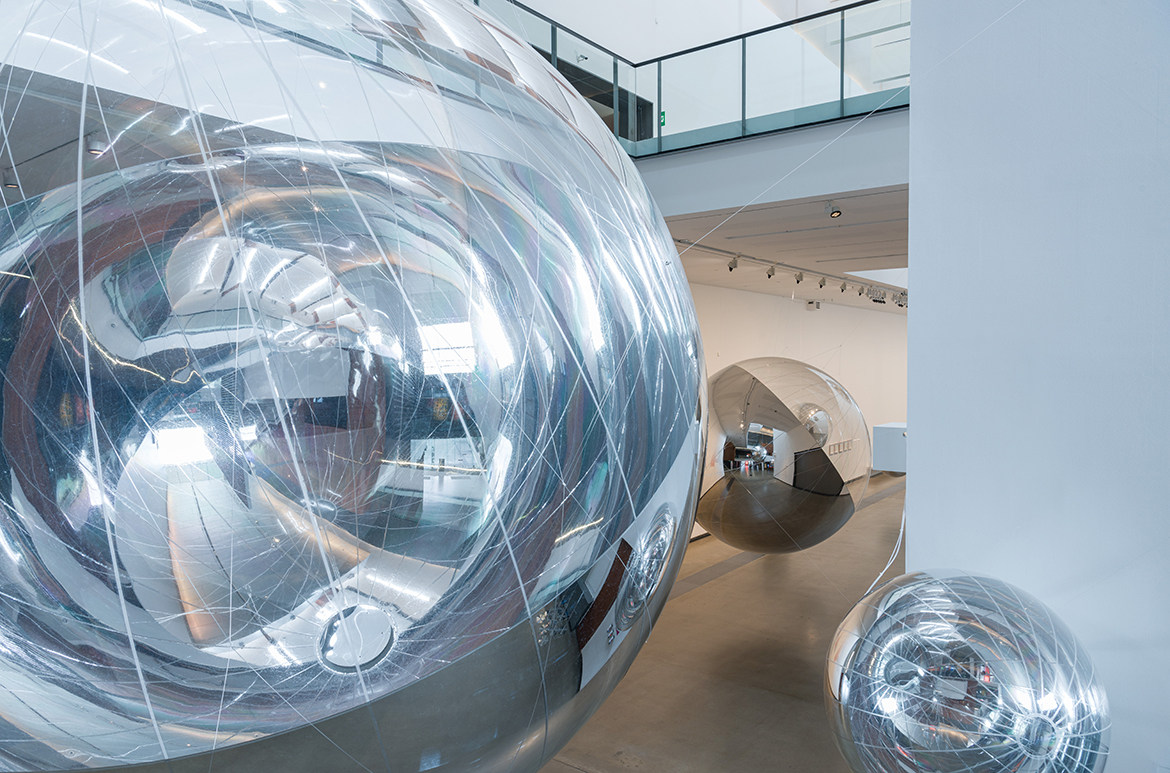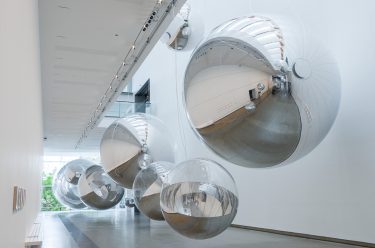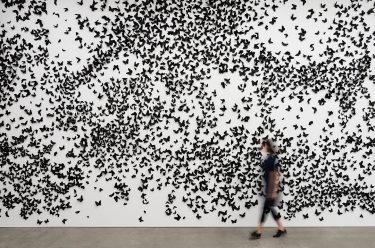Long fascinated by the air, Argentinian-born, Berlin-based artist Tomás Saraceno has created a major new commission — a mesmerising suspended installation — Drift: A cosmic web of thermodynamic rhythms 2022 (illustrated).
Saraceno’s Drift engages the poetic and imaginative potential of air. The spheres are part transparent and part reflective; some float above the viewer at different heights moving gently as if breathing, while others float in apparent stillness. As they catch and refract the light, they remind us of the complex dynamics of the air we rely on.
Watch | ‘Drift’ installation time-lapse
Watch | Tomás Saraceno discusses his colossal installation ‘Drift’
Tomás Saraceno ‘Drift: A cosmic web of thermodynamic rhythms’ 2022


DELVE DEEPER: Tomás Saraceno’s Biospheres
The installation Drift expands on Saraceno’s earlier works based on infrared radiation balloons launched into the upper reaches of the atmosphere by the French Centre National d’Etudes Spatiales (CNES), Paris, where he was artist‑in‑residence in 2012. The artist explains:
The sculptures, made of two different lightweight materials, are experimental models and chart a path towards sustainable human flight technologies. In the world, the mirrored section would reflect the Sun’s radiation, controlling the temperature inside, preventing overheating during the day. The transparent part helps to maintain the temperature inside the envelope during the night and hence its buoyancy. It holds the infrared radiation emitted from the Earth’s surface — the solar heat the planet accumulates over a day. Drawing just enough heat, but not too much, would enable a fluctuating trajectory, a floating choreography in the air, free from fossil fuels, powered only by the thermodynamics of the planet.
Working across the fields of science, engineering, art, philosophy and community organising, in 2015 Saraceno founded the Aerocene Foundation, inviting us to join him in a new era which he calls the ‘Aerocene’. As he says:
The international Aerocene community calls for a different way of living independent from fossil fuels. More deeply attuned to our environment, new infrastructures are imagined through the process of working in collaboration with each other, our ecologies and the atmosphere we rely on.
#QAGOMA


